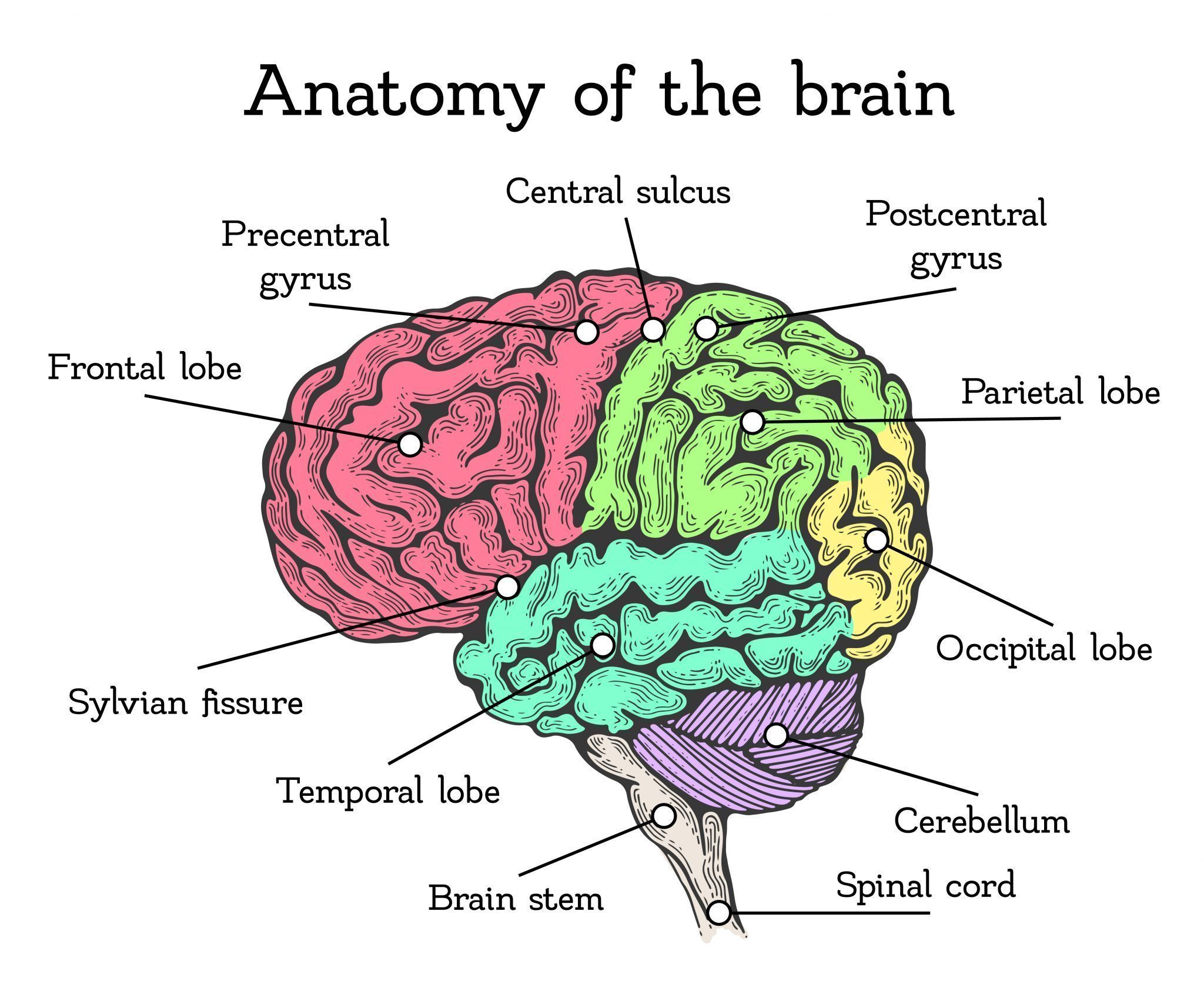
The Male Brain and Vision Work: Demystifying the Divinely Devised Differences
Male Brain. While women don’t often understand or agree, men have—since the dawn of time—had different instincts, emotions, and approaches to situations. Although these approaches can (arguably) be questionable, the varying innate reactions are simply different than those of women: not better, not worse. While both sexes come with their own strengths and weaknesses, we have to wonder: what biological structures underlie the instincts and actions of the male brain? Why are there differences between the male brain and the female brain? And how do the neurophysiological structures within the male brain attribute to the behavior we see in everyday life? Find out more below. How our vision might work is a crazy game.

The Male Brain
Historically, social differences between men and women centralized around physical characteristics and social constructs that defined each gender. As our modern society has progressed to challenge the social roles and labels that have, for centuries, defined men and women, research over the past twenty years has zeroed in on sex-based differences that classify neurological differences between the sexes. While the emerging biological discoveries underline the strengths and weaknesses of both the male and female brain, the overarching goal of research aims to emphasize the divine differences that distinguish sexes—rather than imply inferiority—to better understand how anatomical differences influence behavioral differences between sexes.

While the natural behavioral tendencies of both males and females seem to be unpredictable and bewildering, understanding the neurophysiological dissimilarities between sexes links behavioral differences to a structural root. Although, at times, it seems as though the men and women are from two entirely different planets—as the saying goes:
“men are from Mars, women are from Venus”
Understanding the male brain is fundamental for discovering the neurological and behavioral differences that distinguish the innate tendencies people have based on their biology.
The Male Brain: How It All Started
As a trailblazer in the investigation of behavioral differences between sexes, Nirao Shah, spearheaded research to biological differences in 1998 as he began his postdoctoral fellowship. While Shah observed the behaviors essential for the survival of each sex, he investigated how this innate behavior is biologically wired in the brain. He hoped to find the root of behaviors by identifying neuronal circuitry unique to each sex, he has since inspired researchers to unearth the inherent differences that distinguish the male brain from its female counterpart.
The Male Brain: Structural and Functional Differences
A Question of Grey Matter and White Matter in the Male Brain
The most obvious difference between the male and female brain is the distinctly larger crania of males. Due to the proportionally larger body size of males, larger craniums allow for a larger brain to develop amongst male brains. While the presence of a larger brains lacks correlation for heightened intelligence, a fundamental size difference is present between the male and female brain.
As research has found that the male and female brain are wired differently, it has been determined that the male brain operates on intrahemispheric communication, contrasting that of the female brain which optimally operates through inter-hemispheric communication. This insinuates that the male brain has stronger connections within a single region of the brain, whereas females have stronger connections between the left and right hemispheres. While this puzzling difference seems to be without reason, the cellular composition of brain tissue accounts for the wiring that makes the male brain unique.
As a result of an MRI study at the University of Pennsylvania, it has been confirmed that male brains have higher percentages of white matter. Found within the cerebellum, which is split into the right and left hemisphere, two types of tissue of the central nervous system are found: grey matter and white matter. The outer layer of the cerebellum, composed of grey matter folds, is made up of tightly packed dendrites, cell bodies, and axon terminals.

These tightly folded regions are specialized to regulate memory, language, perceptual awareness, and attention—ultimately containing the synapses that communicate messages. White matter, in contrast, is made up of axons—connecting grey matter to one another—creating a fast communication network, like a metro system. White matter makes up important structures, like the thalamus and hypothalamus, which ultimately relay information from the body to the cerebellum.
Together, these tissues work to allow the white matter to communicate between grey matter areas, and for the grey matter to communicate with the rest of the body. While the researchers at the University of Pennsylvania speculated that the higher volumes of white matter are found amongst larger brains because of the further distance for information transference, the research team concluded that the greater amounts of grey matter amongst the female brain facilitates inter-hemispherical computation of information in a smaller amount of space (e.g. a smaller brain).
During development, the male brain is structured to increase activity and connectivity within each hemisphere by creating communication networks that are modular and direct. While this within-hemispheric processing allows linkage of perception to action along the posterior tract of the cerebellum, it also allows the mediation of motor action ipsilaterally. By way of strong within-hemispheric processing and connectivity, the divinely designed male brain allows for strong coordination of actions in males.
As research and functional imaging have suggested, white matter tracts are activated while working memory is in use. Because of the high percentage of white matter within the male brain, it comes as no surprise that men are better equipped to juggle items within their working memory.
The Male Brain and the Corpus Callosum
The Bridge of the Brain
Extending from the University of Pennsylvania study in 2014, the corpus callosum—a white matter cable that connects the right and left hemisphere—is smaller in the male brain. This also led to the observation of heightened bilateral symmetry amongst the brain in females compared to males: as communication between hemispheres increases, greater symmetry in muscle tissue arises. From these observations, the larger corpus callosum in the female brain can account for the greater inter-hemispherical communication observed in females, and why, biologically, the male brain tends to reflect the success of intrahemispheric communication. This anatomical explanation helps debunk why men are easily frustrated when asked to multitask: because the female brain allows multiple tasks and an abundance of information to flow simultaneously, the smaller corpus callosum in men inhibits the same task juggling ability that the female brain facilitates.
The Male Brain and the Limbic System
The Emotions of a Man

Comprised of the hypothalamus, hippocampus, amygdala, and various other surrounding areas, the limbic system is heavily involved in emotional regulation. In an issue of the Journal of Neuroscience, which was solely dedicated to sex differences within the nervous system, Larry Cahill discussed how the amygdala in the male brain—which experiences and recalls emotional events—is larger than the amygdala in the female brain. Even as infants, MRI research shows that the male brain has higher activity within the limbic system than the female brain. While men are often stereotyped as “unemotional creatures,” this natural, anatomical difference supports the idea that men are, in fact, more emotional than women, but nurture leads to the masking of emotional expression.
Thought to attribute to learning differences between sexes, neurochemical and anatomical differences between the hippocampi of men and women have also been discovered. Contrasting the left hippocampus activation in females, the right hippocampus has increased activation in the male brain; these findings suggest that when presented tasks that require cognitive thinking, males use fewer verbal strategies than women.
Additionally, despite the stereotype that men think about sex more than women, the limbic system— specifically, the hypothalamus—is responsible for this biological drive for sexual pursuit. While the hypothalamus within the male brain is nearly two and a half times larger than the female brain’s hypothalamus, testosterone fertilizing the Y gene (aka the male gene) attributes to this size discrepancy. This is why males report thinking about sex three times more often than females. While this research serves as a biological basis of male behavior, it does not negate an ability to learn to be civil and controlled. (Just because a man has an urge to act, it doesn’t mean he can’t control it!)
The Male Brain and Visuospatial Skills
The male brain tends to surpass the skills of the female brain when it comes to visuospatial skills that allow them to analyze and mentally manipulate objects. Seen from early stages of development, the superior visuospatial abilities of the male brain exceeds the female brain’s ability when it comes time to track moving objects, aim projectiles at targets, and visualize the rotation of two- or three-dimensional objects. While females exceed at other tasks, such as recalling word lists, the differing brain development between sexes explains the heightened accuracy of males in certain skills, such as spatial tasks and motor skills. In everyday life, these surpassing abilities can be seen in navigational skills: males better calculate their position by direction and relative distance traveled, whereas the female brain relies on landmarks to distinguish location.
The Male Brain and Chemical Differences
While we often attribute the prominence of aggression amongst males with their increased levels of testosterone, there are a variety of uses of testosterone throughout the body. Notably, testosterone, in the male brain, impairs impulse-control and ignites libido. While so many questions where they stand with their partner when they see him checking out the supermodel walking by, rest assure that it is just biology at play! Because of the dampened impulse control and revved libido, it makes it harder for men to suppress their impulse to scope the gorgeous woman walking by.
Questionably unfaithful behavior can also be attributed to the presence of the hormone vasopressin. In a study of mole rats, a species containing the vasopressin gene were more monogamous and committed than their cousin species: the cousin species of mole rats that lacked the vasopressin gene were more promiscuous. When the vasopressin gene was injected into the brain of the promiscuous mole rat, the transient tendencies subsided and the mole rats became monogamous. While we are not claiming that men are (always) like rats, a higher presence of vasopressin in the male brain is attributed to more committed, faithful relationships.
While it often seems that male behavior is dominated by their natural abundance of testosterone, the male brain changes when they become a dad-to-be. Similar to the changing chemicals of an expecting mother’s brain, the male brain decreases testosterone and increases bonding hormones, such as prolactin and oxytocin, ultimately equipping them with more bonding hormones to make them better dads.
In terms of stressful situations, male brains have a unique increase of dopamine, serotonin, and norepinephrine in the basolateral amygdala, while female brains don’t. In the onset of stress exposure, chemical levels change within the male brain, particularly influencing the prefrontal cortex and hippocampus, which are associated with spatial and nonspatial memory. This helps to explain why the onset of stressful situations impairs the male brain’s ability of object recognition.
The Male Brain is Different From the Female Brain: Why?
Biologically speaking, the male brain has different sex-steroid hormones than women’s. While females have high levels of estrogen and progesterone, males are dominated by testosterone and androgens. During in-utero development, the male brain becomes heavily influenced by the high levels of testosterone, which are responsible for their masculine body plan; while this naturally attributes to physical characteristics, the surging testosterone naturally shapes the brain, too. Regions, like the amygdala and hippocampus, have an abundance of receptors specific for sex hormones, explaining why these regions differ in size between the male brain and the female brain.
In terms of evolution, researchers break down the neural differences as a result of adaptation to the actions of neurotransmitters and hormones that appease our sense organs and brain. As the female brain has adapted to childbearing and education, the female brain is better adapted for verbal sharing and communication. Evolutionarily, the male brain, in contrast, is adapted for hunting and fighting; as men roamed the land for hunting, their silent pursuits and navigational skills required heightened visuospatial skills and a decreased need for verbal sharing.
Although some behaviors of men are confusing and, at times, unforgivable, nature has equipped men with biological predispositions that are simply different from those of females. Debunking the differences between the biological structures of the male and female brain helps to understand what motivates behaviors. Although testosterone fuels the male brain to strive for sexual pursuit, differing structures between the male and female brain attribute to functional and behavioral differences. While subtle deviations are seen anatomically between the male and female brain, the emerging research of sex-based neurological differences attempts to explain how the male brain approaches life.
Consider checking out an in-depth look at the female brain and how the structural differences result in different behaviors.
Feel free to comment below!
References
Madhura, l., Alex, S., Drew, P., Theodore D., S., Mark A., E., Kosha, R., & … Ragini, V. (2014). Sex differences in the structural connectome of the human brain. Proceedings Of The National Academy Of Sciences Of The United States Of America, (2), 823.
Goldman, Bruce, and Gérard DuBois. “Two Minds: How Men’s and Women’s Brains Are Different.” Stanford Medicine, stanmed.stanford.edu/2017spring/how-mens-and-women’s-brains-are-different.html.














